If you’re running a small business, every click matters. Twitter/X ads can be incredibly efficient—but only if you target the right people with the right keywords and guard your budget with smart structure and measurement.
This guide shows you exactly how to set up lean, testable campaigns that scale once they prove ROI.
1) Start with your outcome (and work backward)
Pick one objective per campaign so the algorithm has a clear job:
- Leads / Sales (conversion)
- Website traffic
- Engagement (for social proof/remarketing warm-up)
- App installs
Budget guardrail formula:
Target CPA = what you can profitably pay for a customer or lead.
Max CPC = Target CPA × Landing-page conversion rate.
Example: If your target CPA = $25 and your landing page converts at 2%, then Max CPC = $25 × 0.02 = $0.50.
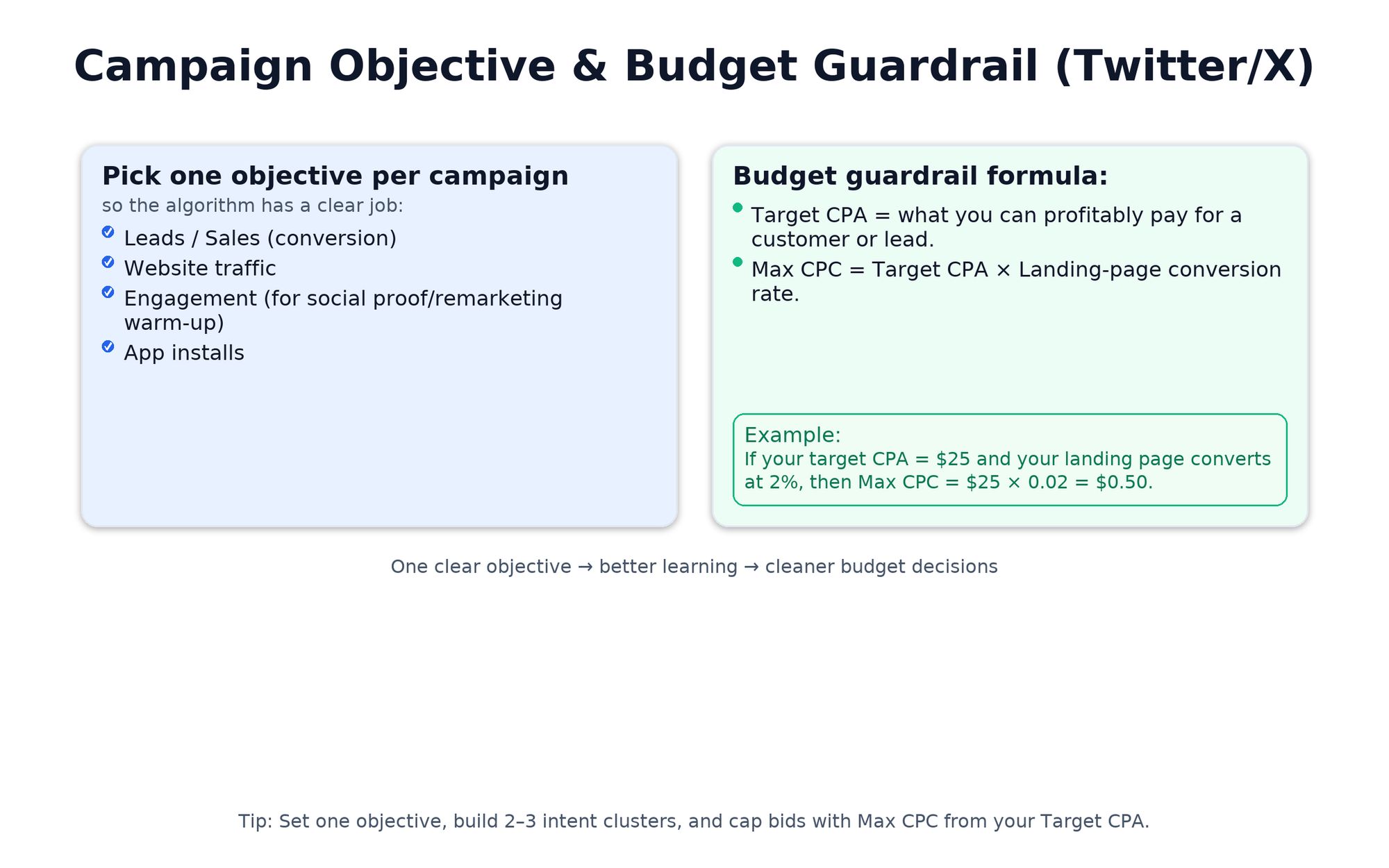
2) Nail your audience before you write an ad
Sketch your Ideal Customer Profile (ICP) in one sentence:
- Who? (role, interest, problem)
- Where? (city/region/country)
- Why now? (trigger, season, event)
On X, you can reach them via:
- Keyword matches (what people tweet/engage with)
- Hashtags (great for culture/conversations)
- Follower look-alikes (people similar to followers of relevant accounts)
- Interests / Topics
- Location / language / device filters
Platform options evolve—use the targeting controls available in your ads account and keep it simple at first.
🧹 Clean your audience to protect budget.
Before you launch, remove bots and “ghost” accounts so your engagement signals come from real people. Cleaner signals = better relevance and less wasted spend—especially if you use follower targeting or engagement expansion.
Use Circleboom’s bot & ghost remover to sanitize your audience.
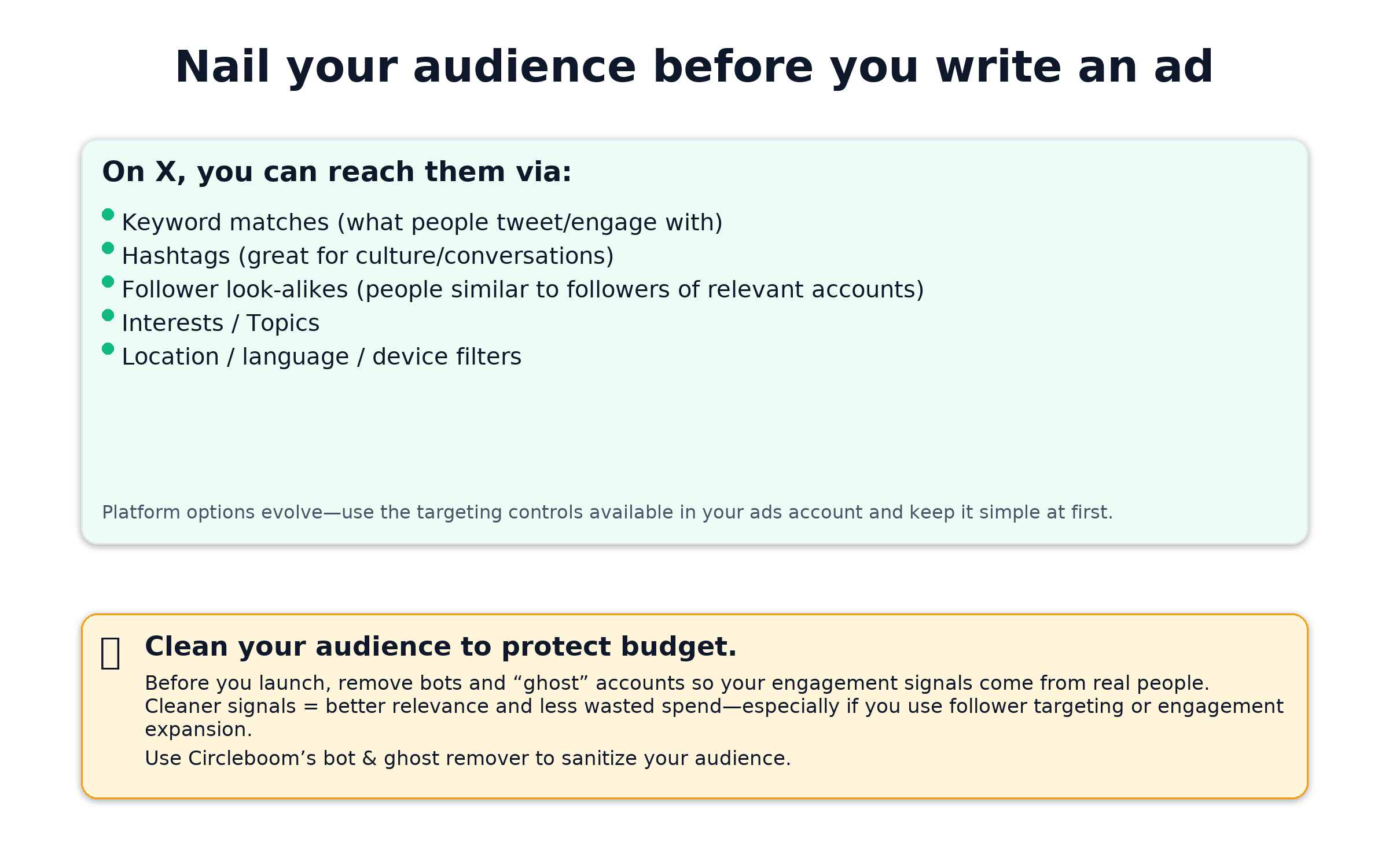
3) Win with keywords (your #1 lever for small budgets)
X is noisy. Keywords turn noise into intent.
Your list should be order-agnostic and real-world: stems, synonyms, misspellings, slang, and hashtags.
How to build a high-intent set fast
- Start with 1–5 seed ideas (e.g., black coffee, eco cleaning, roof leak repair).
- Use your on-page Twitter Ads Keywords Generator to expand into 25/50/75/100 variations.
- Sort by Ad Value (derived from CPC), then mix a few Medium items to discover scale.
- Remove obvious mismatches and any Political = Yes items if you want brand-safe only.
Cluster by intent
- Bottom-funnel: near me, price, deal, coupon, book now
- Mid-funnel: best, top, vs, reviews
- Upper-funnel: how to, tips, guide, ideas
Run each cluster in its own ad group so you see which intent prints ROI.
🎯 Hyper-target competitor loyalists (high intent).
If you know who routinely amplifies your competitors, you can reach a proven, in-market audience. Use Circleboom’s Retweeter Export to find and analyze the retweeters of competitor accounts, then:
- Build ad groups using Follower / Follower-Lookalike targeting for those handles.
- Mine their timelines for intent keywords & hashtags to add to your clusters.
- Layer location + language + device to keep efficiency high.
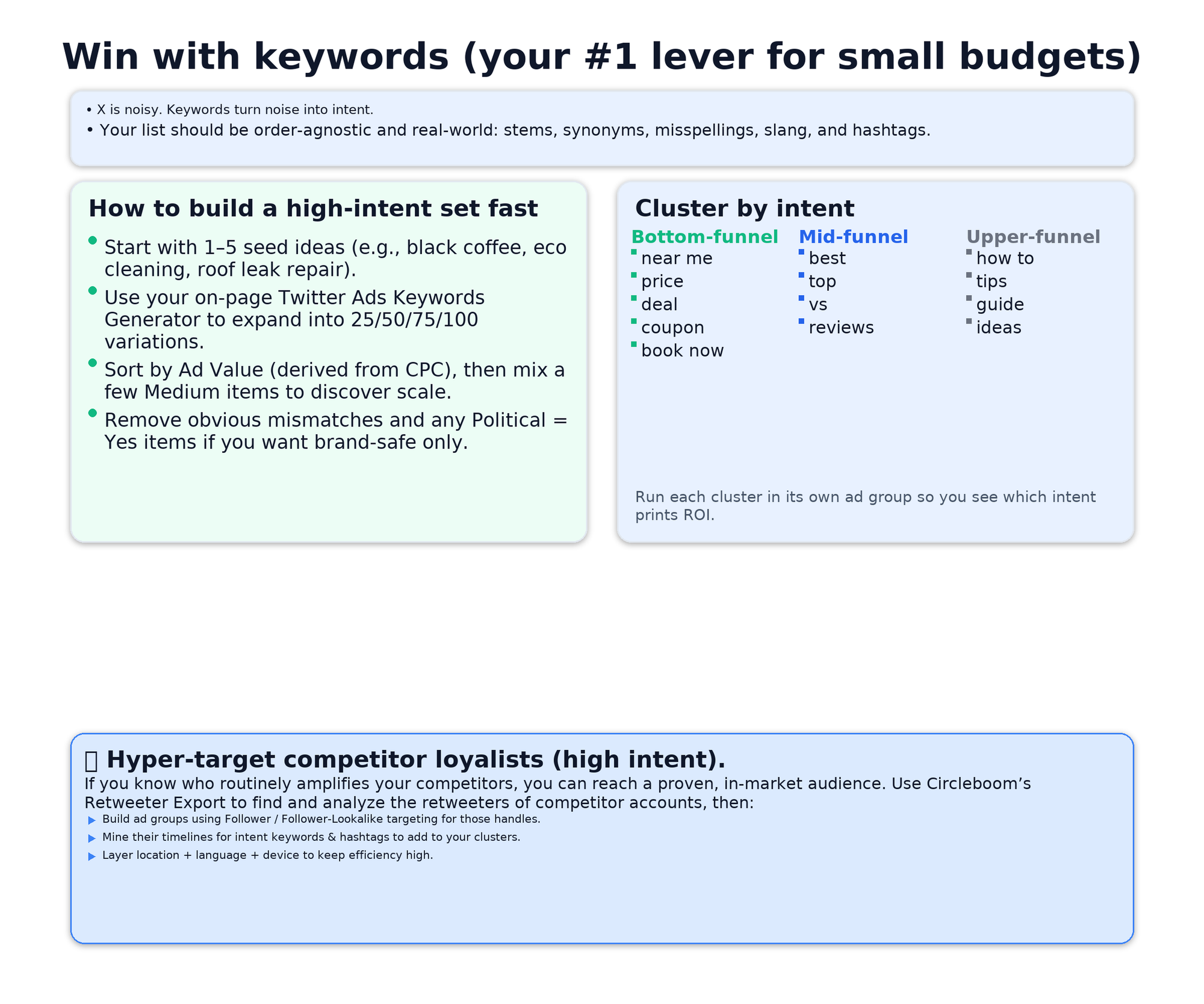
4) Smart, simple campaign structure (built for testing)
Campaign (1): Conversions (or Traffic if your tracking isn’t ready)
- Ad Group A – Bottom-Funnel Keywords (core 10–30)
- Ad Group B – Mid-Funnel Keywords (discovery 10–30)
- Ad Group C – Hashtags / Culture (optional, cheaper reach)
Daily budget split:
- 60–70% → Ad Group A (highest buying intent)
- 20–30% → Ad Group B (scale potential)
- 0–20% → Ad Group C (test cheaply)
Keep it lean. One campaign + 2–3 ad groups beats 10 scattered tests.
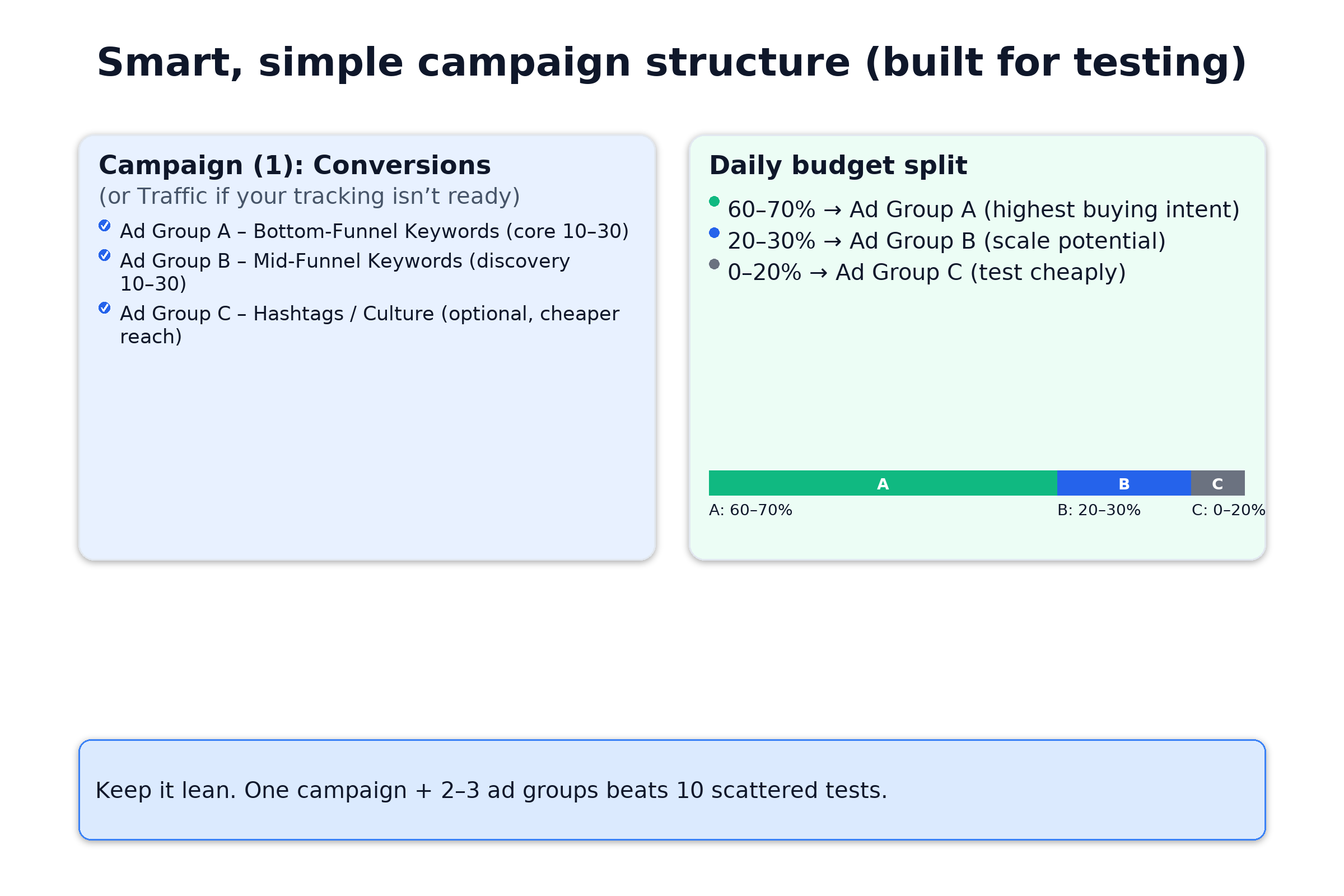
5) Creative that matches intent (and stops the scroll)
Hook (first line): a problem or promise
Benefit: outcome they care about (save time, save money, feel great)
Proof: social proof, metric, guarantee, or clear detail
CTA: one action (Book now, Get quote, Download guide)
Examples
- Roof leak? Fix it this week with a flat, guaranteed quote. Book a 15-min inspection →
- Love black coffee? Try our single-origin roast—first bag 20% off today →
Match creative to intent: “deal/price” ad groups should show a price or % off in the creative.
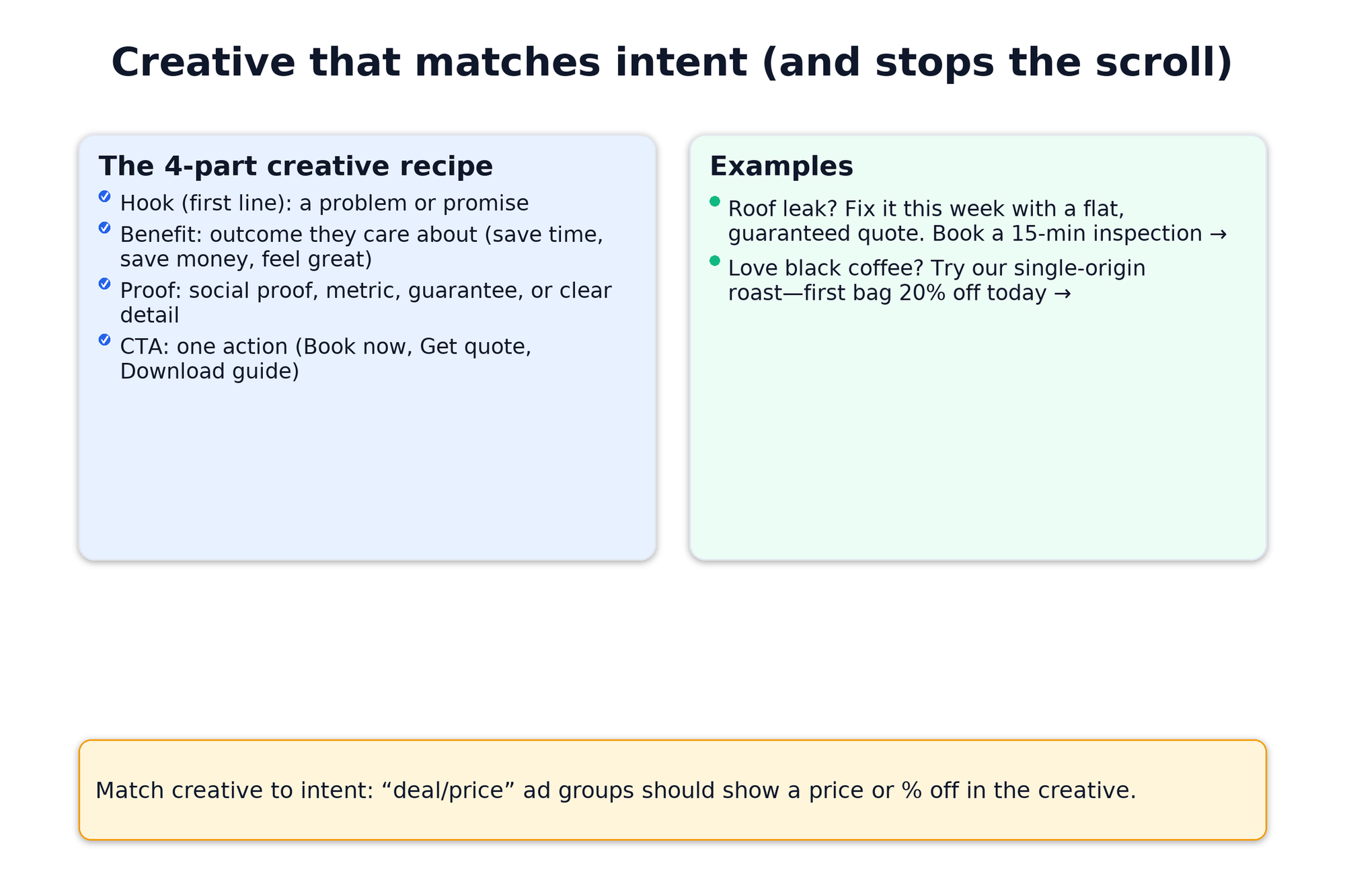
6) Bidding, budgets & pacing for small teams
- Start low, raise fast: Begin with the minimum daily spend you can monitor closely. Nudge +10–20% on ad groups that hit your Max CPC or beat Target CPA.
- Cap poor performers quickly: If after ~500–1,000 impressions an ad’s CTR is weak vs your average, rotate fresh copy/images.
- Day-parting: If you see clear time-of-day winners after a week, schedule to those windows.
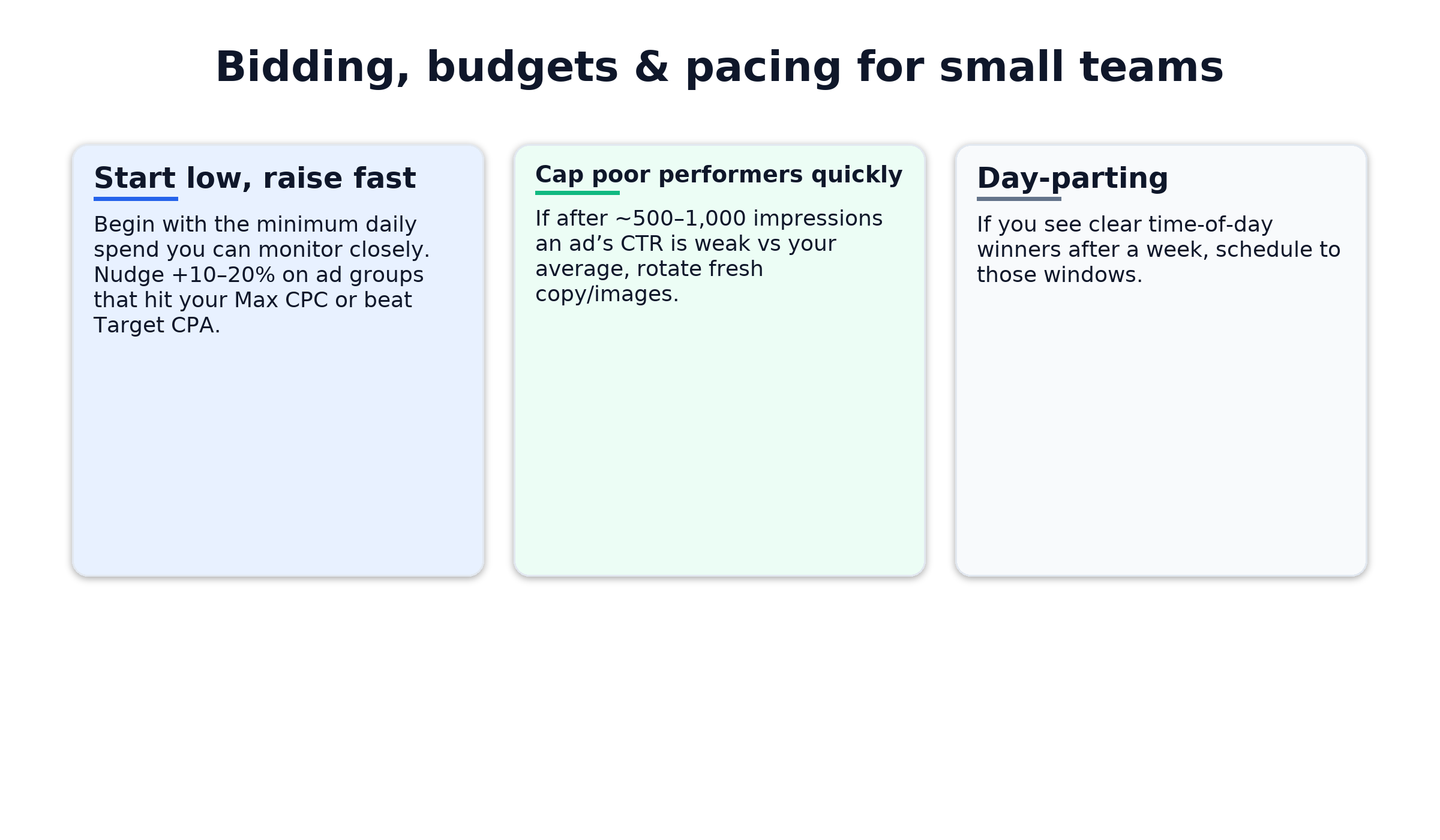
7) Measurement that actually guides decisions
- Install conversions tracking (pixel/SDK/CAPI equivalent in your ads account).
- Track CPA, CTR, CPC, CVR at the ad group level first; then graduate to keyword view for pruning.
- Build a simple sheet with:
- Spend, Clicks, CPC
- Leads/Sales, CPA
- CTR, CVR
- Notes (what changed today)
Rule of thumb: keep ads that hit or beat Target CPA and allocate them more budget; pause the rest.
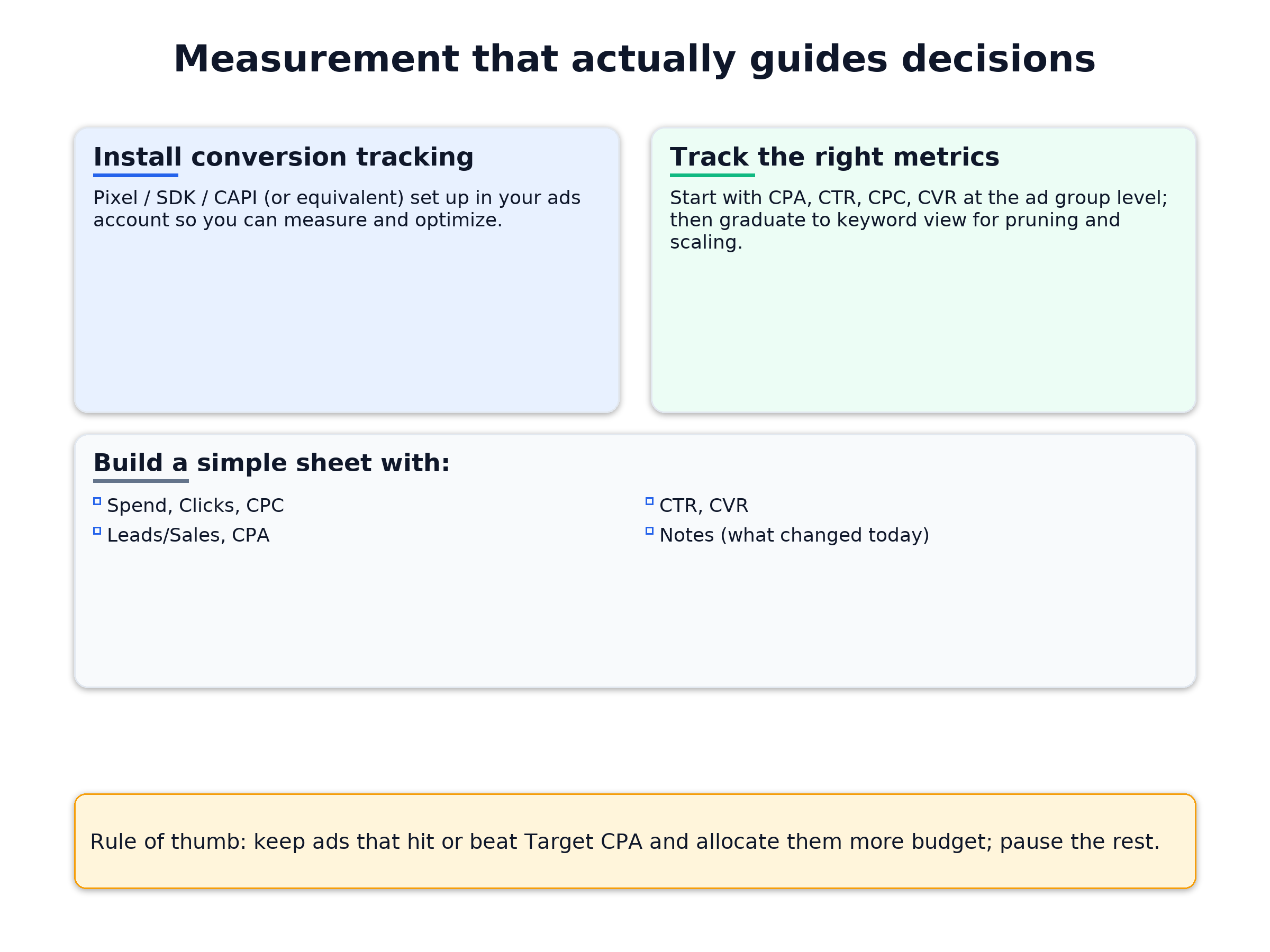
8) Weekly optimization routine (30–45 minutes)
- Keywords: Add 10–20 new ideas from your generator; pause obvious mismatches.
- Budgets: Move 10–20% daily budget from losing ad groups to winners.
- Creatives: Keep 2–3 live variants per ad group; replace the worst performer weekly.
- Landing page: Improve the headline/offer. A 1-point CVR lift increases your Max CPC (and therefore reach) without raising CPA.
- Brand safety: If needed, exclude sensitive terms/topics and keep Political = No rows only.
- Audience hygiene: Run a quick Circleboom sweep weekly to remove new ghosts/bots so ongoing engagement and lookalike seeds stay clean.
- Competitor fans refresh: Export the latest retweeters of 1–2 rival accounts with Circleboom and add a small test ad group targeting their follower lookalikes + your best intent keywords.
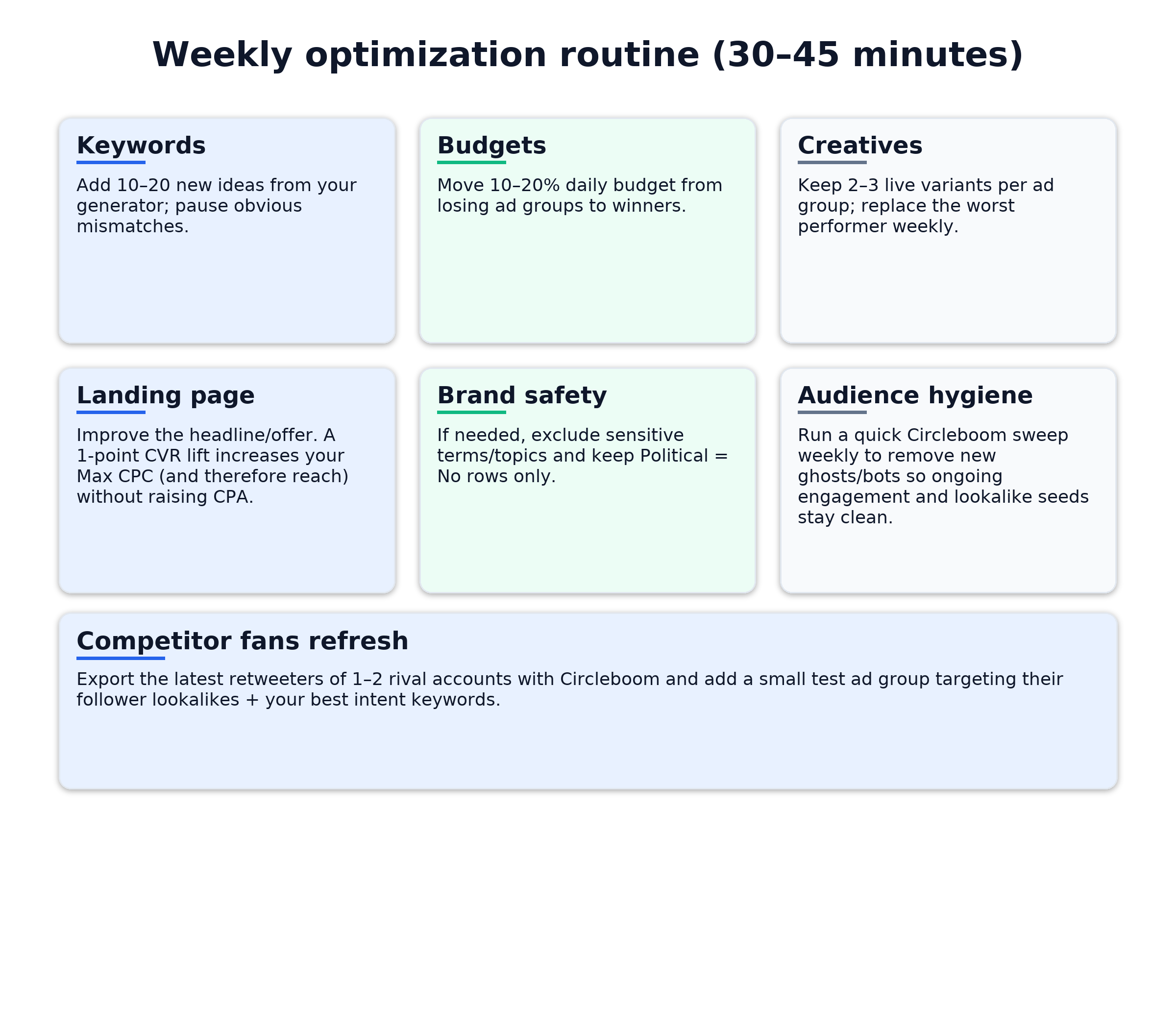
Sample 14-day launch plan
Days 1–2: Set up conversions, define ICP, write one solid landing page.
Day 3: Generate 50–100 keywords, cluster into two ad groups, create 2–3 ad creatives per group.
Days 4–7: Let the algorithm learn. Trim obvious losers (very low CTR or irrelevant).
Days 8–10: Shift budget to winning ad group, refresh 1–2 creatives, add 10–20 new keywords.
Days 11–14: If CPA is on target, scale +20–30% budget; spin up a second campaign only if you’ve maxed the first.
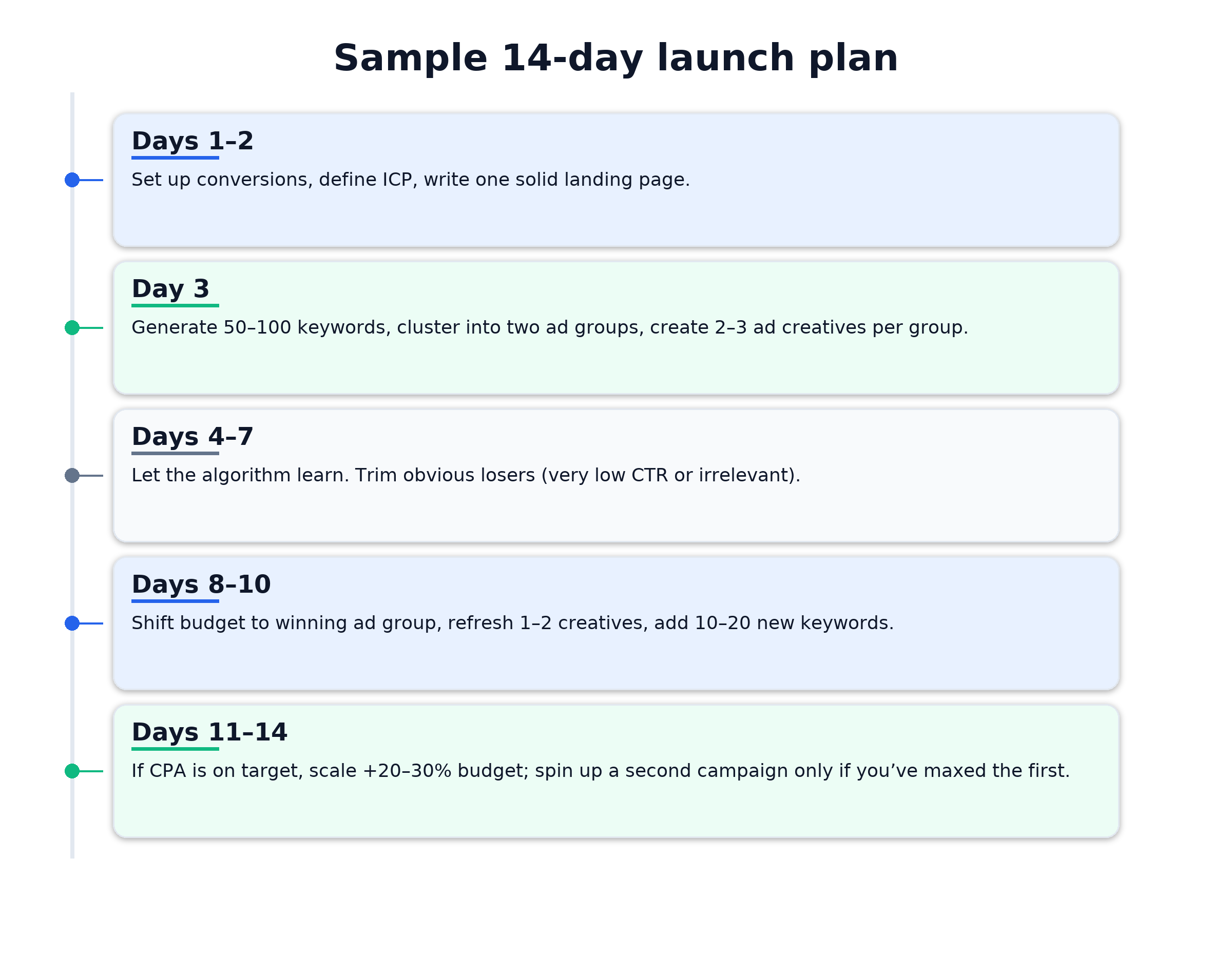
Common pitfalls (and easy fixes)
- Too many campaigns: Consolidate. You need signal density for learning.
- Generic keywords only: Mix in intent modifiers (near me, price, best, how to).
- No offer in ads: Add a tangible hook (limited-time %, free consult, quick quote).
- Random budgets: Tie bids to Max CPC and spend to Target CPA.
- Not testing landing pages: Even small copy tweaks can halve your CPA.
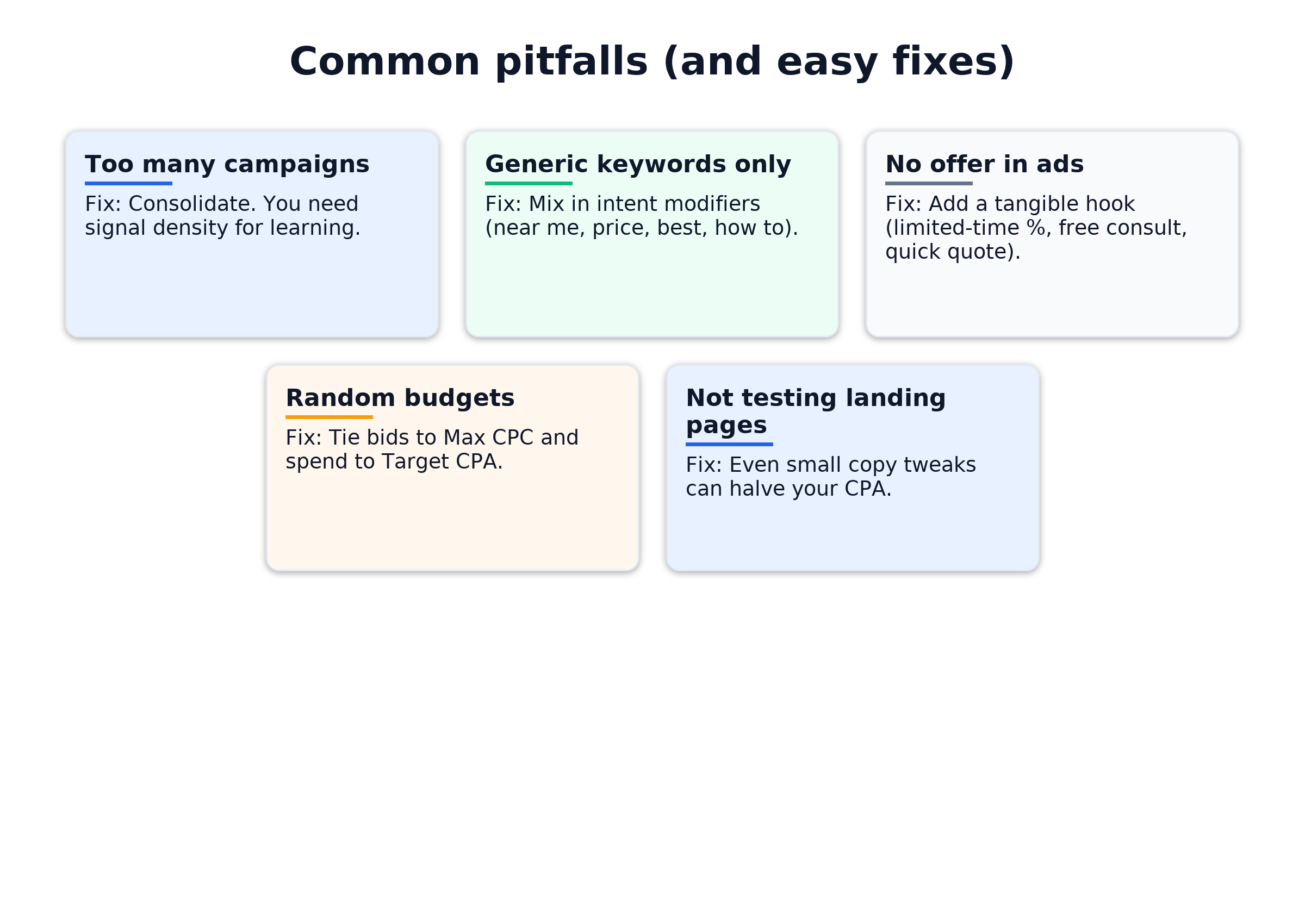
TL;DR for small budgets
- Keywords & targeting are your ROI engine. Build clustered, intent-rich lists.
- Match creative to intent and keep structure lean.
- Measure, prune, and re-invest every week.
- Scale what works; kill what doesn’t—fast.





